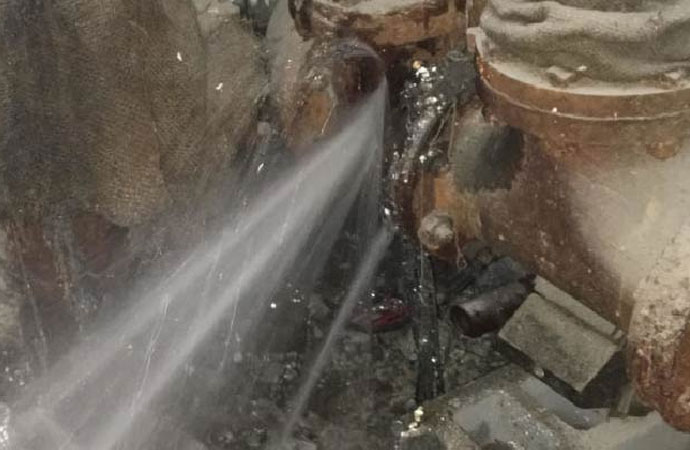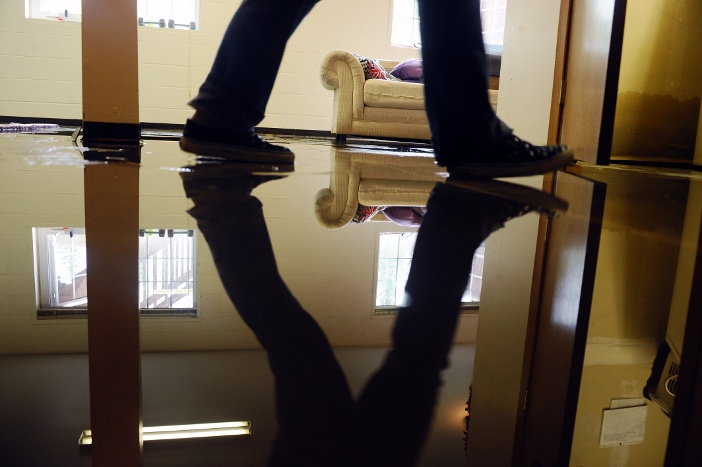Learning About Septic Tank Maintenance: Essential Tips
Learning About Septic Tank Maintenance: Essential Tips
Blog Article
Were you searching for help and advice concerning The Do’s And Don’ts When Water Floods Your Home?

What should you do if a pipes bursts in your residence? Do you desire a mini-waterfall and also flooding in a location of your house? You must act fast if you find yourself in this scenario. The longer you wait, the more severe the damage that can happen to your residential or commercial property. The presence of mind is key in these events. For these reasons, you need to find out just how to act in case of a ruptured pipes. Look into the adhering to ideas listed below to help you act quickly because time is of the essence.
Turn off the Main Waterline Valve
The first thing to do? Close the shut-off valve. Try to find the regional shut-off valve to switch off the water in one details location only. Go for the primary water line valve and turn it off if you do not recognize where the localized shut-off valve is. This step will cut off the water promptly in your entire home. Usually, the major shutoff is discovered outside the home beside the water meter. If it's not there, you can likewise find it in 2 areas: in the basement at eye level or the 1st floor on the ground. Typically, building contractors placed the shut-off shutoff in the main ground degree shower room or right beside it.
Call Water Damages Restoration Pros for Aid
After shutting the water resource, call the professionals for assistance. With their specialist help, you can avoid a lot larger water damage consisting of deformed baseboards, loose ceramic tiles, or harmed structures.
File the Damage For Insurance policy
While you're waiting for the pros to arrive, get some paperwork of the damages brought on by the errant pipe. Take photos and also video clips of everything. Do close-up shots of the damaged belongings as well as places. Your documents will function as evidence for your house owner's insurance policy. Maintaining proactive with this situation helps you to file a claim for coverage, which will even more support you as well as your household to come back on your feet.
Salvage Things That Can Be Saved
Once you're done taking pictures, analyze the damaged items and get the most important ones from the stack. Dry them off in a dry/warm place away from the broken location as well as try to protect them as much as you can. Drag as much moisture as you can to the material so it can begin to dry.
Beginning the Drying Refine
You require to begin the drying process as soon as possible. Thankfully, the water from your waterlines is already tidy so you do not need to fret about drain water. However, the moving water may have disrupted the dust and particles in your floorboards as well as carpets. In this situation, put some handwear covers on and also start some damage control. Usage pails to discard out the water. Blot out as much water as you can from the surface areas with old towels. Activate an electric fan or open your home windows to promote air circulation. These steps will accelerate to completely dry and hinder mold and mildew and mold development.
Professionals are the only individuals qualified to assess properly and repair the burs pipelines as well as succeeding damage. They normally give silent red flags like gurgling paint, water stains.
What should you do if a water pipeline bursts in your home? For these factors, you require to learn exactly how to act in the occasion of a burst water pipeline. After shutting the water source, call the specialists for help. With their professional aid, you can avoid a lot bigger water damage consisting of deformed walls, loose ceramic tiles, or damaged frameworks. The good news is, the water from your waterlines is already tidy so you do not have to worry regarding sewage system water.
BROKEN WATER PIPES: COST TO REPLACE & WAYS TO FIX A PIPE
CAUSES OF A BROKEN WATER PIPE
A water pipe can break for several reasons depending on the environment you live in, type of pipe, and circumstances.
The most common cause of broken pipes is freezing. If you live in a colder climate, this could happen. When water freezes it increases in volume by 9% and the pressure in the pipes can go from 40 psi to 40,000 psi. Clearly, this could be detrimental to the pipes. Water freezing causes quick expansion, which puts stress on the pipes and could lead them to crack or weaken. When water thaws, it will leak out the cracks. Other changes in water pressure can also cause breakage. Another common cause of broken water pipes is age.
Depending on the material, water pipes can last anywhere from 70-100 years. But the older they get, the more susceptible they are to weakening and corroding. Older pipes coming into contact with another material could speed up the corrosion process as well. PVC pipes can become brittle with age, while copper is prone to corrosion and stress over time. Something that could also potentially break water pipes is when they move. They may move from construction or the house settling. Moving can stress the fixed pipe which may lead to a leak or burst pipe.
HOW MUCH WATER COULD LEAK INTO YOUR HOUSE FROM A BROKEN PIPE?
The amount of water that leaks depend on how big the break in a pipe is. If it is just a minor crack, water will slowly leak out. This isn’t as serious as a full broken pipe, but it can still cause significant damage to your home. Burst pipes can leak up to 10 gallons of water per minute. The amount of water leaked also depends on what appliance is involved. The water line to your refrigerator can leak ½ to 1 gallon per minute depending on water pressure. One toilet supply line may leak 2-3 gallons a minute and a washing machine hose will leak up to 10-12 gallons per minute.
TURN THE WATER OFF
Doing this first is imperative; everything else can wait. You need to deactivate the water supply to stop the flow of water and prevent more water from leaking into your home. Shutting off the water could potentially save you thousands in water damage repairs. Locating the water shutoff valve depends on the climate you live in. For colder climates, the valves are usually inside, such as in the basement. For houses in milder weather, the shutoff valves will probably be outside—either attached to an exterior wall or in an underground box with a removable lid.
OPEN A FAUCET
The next thing to do is to open a faucet or turn on a sink. This will relieve any remaining water pressure in the pipes and ensure a full-shut down.
GET RID OF THE WATER
The quicker you get rid of the water, the less water damage and mold there could be. Use a mop and a shop vacuum to help get clean up the water. Use towels to dry everything the best you can.
CUT AND REMOVE THE DAMAGED PIPE
Once you have shut off the water and drained the damaged water pipe, you can begin to fix the issue. Cut out the damaged section of the pipe with a pipe cutter, ensuring that you also cut one inch extra on each side of the damage. Once you get rid of the broken part of the pipe, you may begin repairs.
https://www.wmhendersoninc.com/blog/broken-water-pipes-cost-to-replace-ways-to-fix-a-pipe/

I am just very interested by What To Do And What Not To Do When Dealing With Water Damage and I hope you liked my blog posting. Appreciated our blog? Please share it. Let other people locate it. I truly appreciate reading our article about Water Damage Restoration Do’s And Don’t.
Report this page